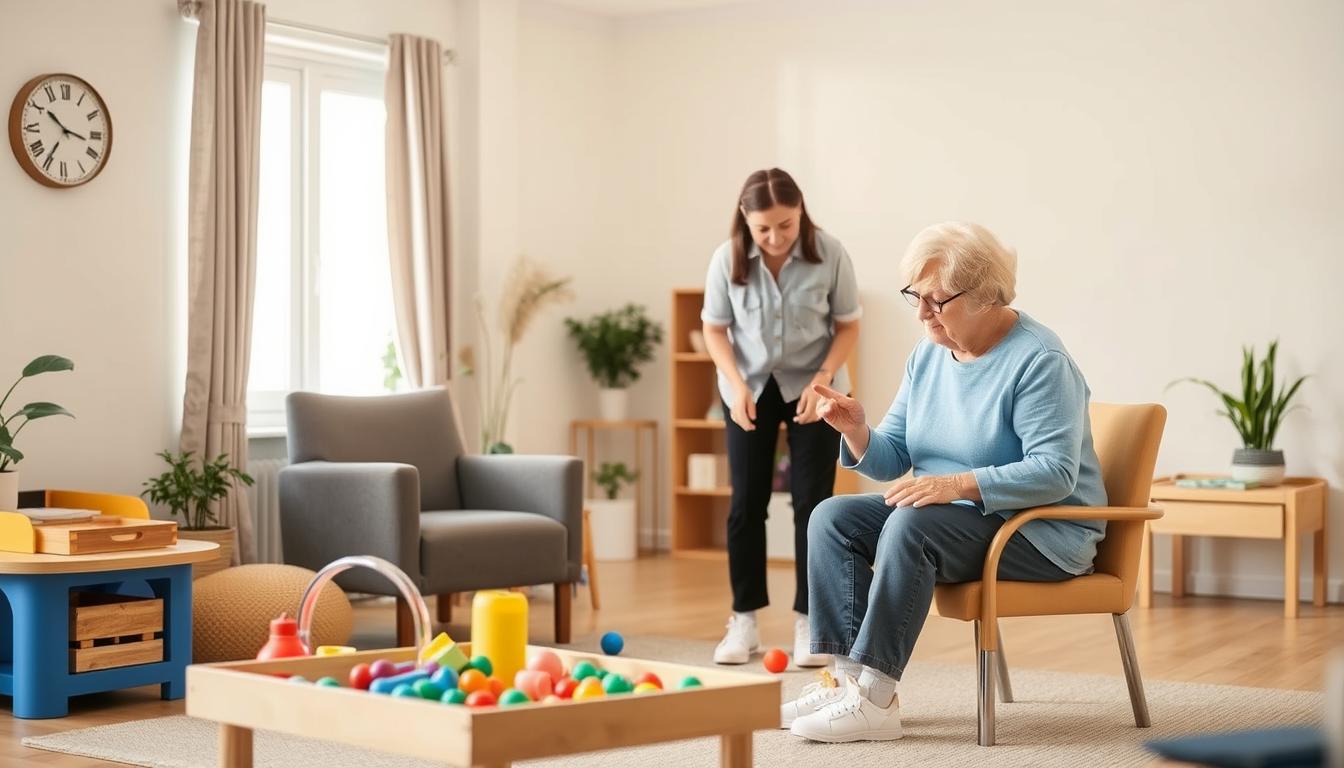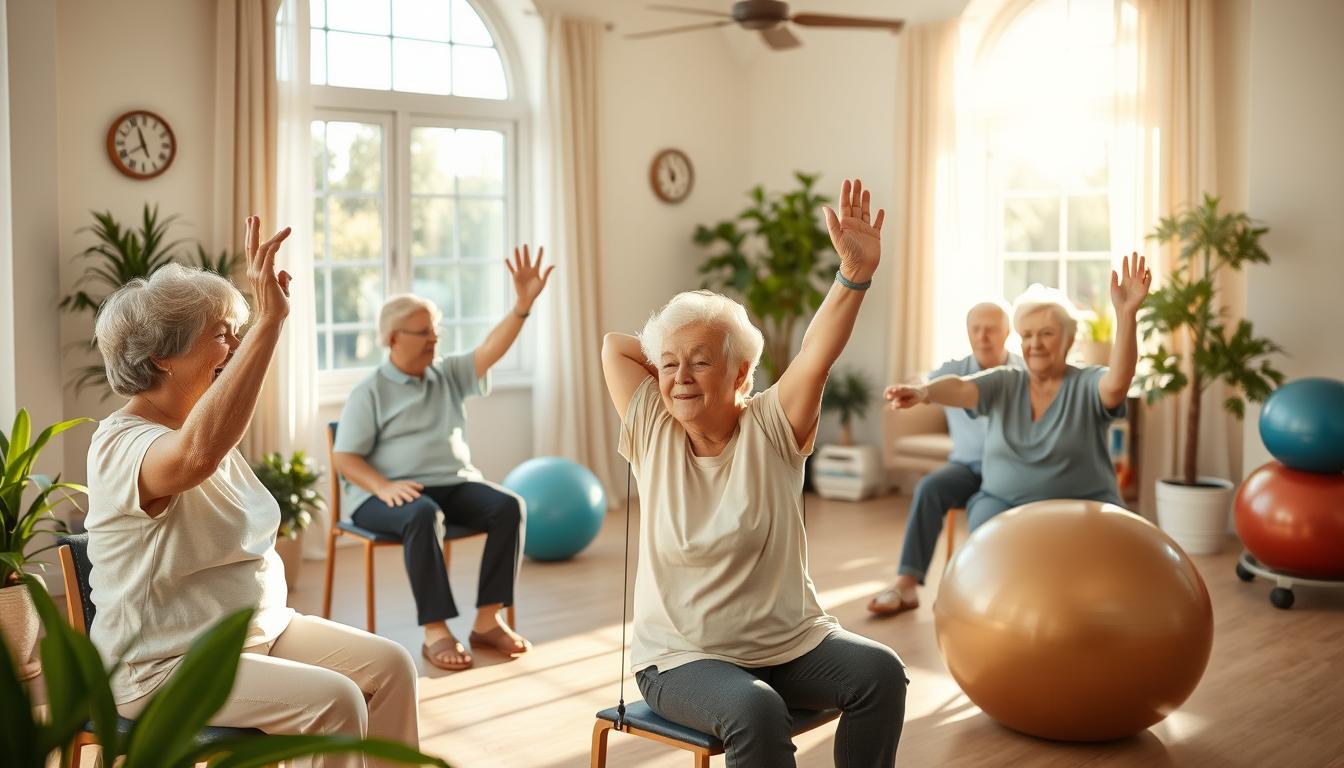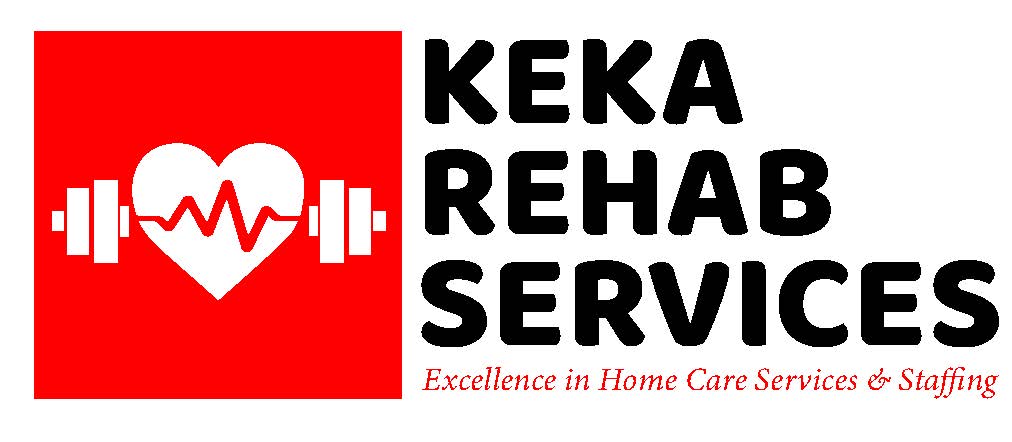Did you know the number of older people will double by 2050? This means 22% of people will be older then. We need good ways to help them age well.
Senior occupational therapy is key. It helps older adults live better lives, become more independent, and be happier.
The United Nations has a big plan to help everyone age well from 2021 to 2030. This plan is essential for our future.
Elder rehabilitation therapy is beneficial. It is especially helpful for older adults. Through it, they can improve their thinking and movement and even make their homes safer.
Key Takeaways
- The older population is expected to double by 2050
- Senior occupational therapy promotes independence and well-being
- The UN has designated 2021-2030 as the decade of healthy ageing
- Occupational therapy addresses mobility, cognition, and daily activities
- Elder rehabilitation therapy offers tailored interventions for seniors
- OT helps modify home environments to improve safety and independence
Understanding the Fundamentals of Senior Occupational Therapy
Senior occupational therapy helps older adults live better lives. It helps them stay independent and do things they love, even with age-related issues.
Defining Occupational Therapy for Older Adults
An occupational therapist for the elderly creates unique plans for each person. These plans help with physical, mental, emotional, and social challenges. The therapist aims to keep older adults happy, independent, and involved in enjoyable activities.
Geriatric occupational therapy covers many areas. These include helping with daily tasks, moving around safely, preventing falls, and improving thinking skills.
The Role of Geriatric OT in Healthcare
Geriatric OT experts are key in healthcare for seniors. They check homes for dangers and suggest ways to make them safer. They also help with memory and solving problems.
They also focus on emotional health. They teach coping skills and help seniors meet new people.
Key Components of Elderly Rehabilitation
Ageing care therapy includes many parts to help seniors stay healthy and independent. These are:
- Physical exercises to boost strength, flexibility, and movement
- Brain games to improve memory and thinking
- Activities to keep seniors connected and not lonely
- Checks of the home for safety and suggestions for changes
- Teaching how to use tools and find new ways to do things
Occupational therapy addresses these areas. It helps seniors stay independent, lowers their fall risks, and allows them to enjoy life more.
The Growing Need for Elder Care Services
The need for elder care is rising fast. By 2060, the number of people 65 and older will almost double, making up nearly a quarter of the population. This shows that we need elder rehabilitation therapy and senior living help.
Getting older brings significant challenges. Most people over 65 have health issues like high blood pressure or arthritis, which can make everyday tasks difficult. That’s why occupational therapy is key to staying independent.
Most seniors want to stay in their homes, not move to places that require more help. This shows how vital home therapy is. Occupational therapists help make homes safer and teach new skills for living alone.
Senior care is not just about physical help. Occupational therapy can sharpen seniors’ minds, helping them remember better and think clearly. It can also help with sadness and worry, making seniors feel better.
As more seniors need care, we need more trained helpers. Programs like the online OTD from TTUHSC SHP are getting people ready. They will be key in caring for our ageing society.
Benefits of Occupational Therapy for Seniors
Senior occupational therapy is very beneficial for older adults. It improves their daily lives and helps them stay independent.
Physical Health Improvements
Elder rehabilitation therapy makes seniors stronger and more flexible. It helps them do everyday tasks easily. It’s great for those with arthritis, diabetes, or after a stroke.
Mental Health Enhancement
Occupational therapy keeps seniors’ minds sharp. They might do puzzles and memory games. If they forget things, a care plan can help them remember better.
Social Engagement Benefits
Senior occupational therapy includes group activities. These help seniors feel less alone and happier.

Quality of Life Impact
Occupational therapy improves the lives of seniors. It helps with shopping and taking medicine. Your therapist might suggest tools to make things easier and safer. You’ll feel more independent and happy.
Elder rehabilitation therapy also helps prevent falls. Falls are common among seniors. Learning to balance better keeps you safe.
Daily Living Skills and Independence
Occupational therapy helps seniors stay independent. It focuses on tasks like bathing and dressing. This is key for those who struggle with daily activities.
Personal Care Activities
Senior living programs focus on personal care, including bathing and dressing. Occupational therapists make plans just for each person.
Home Management Skills
Therapy also helps with home tasks like cooking. It improves the skills needed for these tasks. Safety checks make homes safer for seniors.
Community Integration
Therapy helps seniors stay connected and feel needed. In-home treatment is popular for its ease and results. It allows seniors feel more confident at home.
Therapy plans are made specifically for each person. They consider health and daily life, helping seniors maintain their independence and control.
Home Safety and Environmental Modifications
Senior occupational therapy makes homes safe for older adults. Experts inspect homes and suggest changes to improve safety, helping seniors live better and avoid accidents.
Falls are a serious danger for older people. Between 28% and 35% of those 65 and older fall at home annually. Those over 70 face even higher risks, falling 32% to 42% of the time.
Occupational therapists make homes safer to prevent falls. They suggest:
- Installing handrails and grab bars
- Adding walk-in showers
- Building wheelchair ramps
- Applying slip-resistant flooring
These changes make homes safer and help seniors stay independent. A study showed that home changes helped frail seniors live longer and stay active.
Experts in ageing care therapy create plans just for each senior. They ensure that the changes fit the senior’s needs and preferences, which makes the changes more likely to be used.
Senior occupational therapy makes homes safer and more accessible for older adults. This helps them live better and saves money on healthcare costs.
Memory and Cognitive Support Strategies
Occupational therapy helps seniors with memory and thinking problems. It aims to improve memory and manage dementia, helping older adults stay mentally sharp and happy.
Memory Enhancement Techniques
Occupational therapists use puzzles and games to help seniors remember better. These activities make the brain work harder, and studies show that seniors who use these programs remember things 25% better.
Cognitive Training Exercises
Cognitive training is essential for Alzheimer’s therapy. It keeps the mind sharp. Seniors do tasks that make them think and remember better.
These exercises help them do daily tasks on their own. They keep their quality of life reasonable.
Dementia Management Approaches
Occupational therapists use unique methods to treat people with dementia. They adapt to the environment and teach caregivers how to communicate better. Therapy plans are also made to help with daily tasks like dressing and cooking.
Occupational therapy is key to seniors’ brain health and independence. It tackles memory, thinking, and managing dementia, helping older adults keep their minds sharp and feel good.
Fall Prevention and Balance Training
Falls are a major concern for seniors. Over 25% of adults 65 or older fall every year, and 3 million need emergency care for injuries. Senior occupational therapy can help a lot with this problem.
Risk Assessment Methods
Occupational therapists check many things to see who might fall. They look at strength, balance, vision, and how well someone thinks. They also check the home and how medicine is managed.
They focus on places where accidents often happen. Like bathrooms and dark bedrooms.
Prevention Strategies
Elder rehabilitation therapy makes homes safer. Therapists suggest installing grab bars and better lighting and helping remove things that could cause a trip.
They also help with medicine because taking too much can make falling more likely.
Balance Enhancement Exercises
Occupational therapists create special exercises to help with balance and moving better. Doing these exercises often can help avoid falls. A good routine is 5 to 30 seconds, done twice a day.
Always talk to your doctor before starting new exercises.
Senior occupational therapy helps older adults stay independent and live well. It also lowers the chance of falling.
Caregiver Support and Education
Occupational therapists are very helpful to senior caregivers. They know how difficult it is and give them the tools they need. In the United States, about 17.7 million family caregivers help those 65 and older who can’t do things independently.
They teach caregivers how to handle the challenging parts of caring for someone. They help them learn skills for work and everyday life. Studies show that therapy works better for older adults by 37% when caregivers join in.
Experts in assisted living occupational therapy to teach caregivers how to move people safely and show ways to help seniors do things on their own. When caregivers help with therapy, it works 25% better.
Caregiver burnout is a serious problem. Many caregivers in the US are over 50, with almost one in five over 65. Occupational therapists help by teaching ways to take care of oneself. They stress the need for self-care and finding balance in life.
Good communication between caregivers and therapists is key. 78% of therapy success comes from talking often. This teamwork ensures therapy meets the needs of seniors and their caregivers.
Therapeutic Activities and Exercise Programs
Senior occupational therapy has many activities for older adults. These help improve strength, flexibility, and social skills. They are important for elder rehabilitation therapy.
Strength Training Exercises
Strength training is key in senior occupational therapy. It keeps muscles and bones strong. Seniors might lift light weights or use resistance bands.
These exercises are made for each senior’s needs and goals.
Flexibility and Mobility Work
Flexibility exercises are essential in elder rehabilitation therapy. They help you move better and feel less stiff. Stretching and gentle yoga are part of this.

Group Activity Programs
Group activities are significant in senior occupational therapy. They help with social skills and physical goals. Programs include group exercises, memory games, or crafts.
These activities boost motivation and create a supportive place.
In elder rehabilitation therapy, therapists use different tasks to improve thinking. Patients do memory and attention worksheets in 3 to 4 minutes. They can remember about 20 out of 26 items in 4 minutes.
These exercises keep the mind sharp and help with daily tasks.
Senior occupational therapy also focuses to prevent falls. Falls are a major risk for older adults and can cause serious injuries. Programs like Think, Move, and Improve help keep seniors strong and balanced, even with conditions like Parkinson’s disease.
These programs are vital for keeping older adults safe and independent.
Assessment and Progress Monitoring
Geriatric OT checks how well seniors can do things. Skilled nursing OT folks use special tools to see how they do daily tasks. They also look at thinking skills and what they need in their environment. This helps make plans just for them.
The Barthel Index is a big help in OT for older adults. It looks at things like eating, bathing, and moving around. Therapists might use a simpler version, the Modified Barthel Index, which scores from 0-20.
The Katz Index is another essential tool. It checks how well seniors can dress, use the bathroom, and move around, indicating their ability to perform daily tasks. For a complete check-up, therapists might use the Kohlman Evaluation of Living Skills, which examines 17 basic skills, such as self-care.
It is important to monitor the health of seniors. The AM-PAC is often used in nursing homes to assess their ability to think, move, and perform daily tasks. The Stroke Impact Scale, for stroke patients, examines eight areas, including memory and emotions.
Regular checks help therapists ensure that plans are working and that they can change them if necessary. This keeps seniors independent and happy.
Conclusion
Senior occupational therapy is vital for healthy ageing. It helps older adults with many health issues, including multiple health problems. About 68% of those 65 and older have more than one health problem.
Occupational therapists work one-on-one with seniors. They help them move better, fall less, and visit the hospital less often.
Senior occupational therapy makes a difference. A study showed seniors aged 60 to 89 got 14 per cent better in feeling good, thinking clearly, and being happy.
This shows it can make life better and help the healthcare system.
It’s also great at preventing falls. Making homes safer can reduce falls by 26% in seniors 60 and older.
Occupational therapy also helps with memory loss, which is a major concern for seniors. It uses unique methods to help.
It helps seniors with everyday tasks, thinking skills, and staying connected. This allows them to remain independent and live well.
As more people age, senior occupational therapy will become even more critical. It examines the whole person, not just physical health, and helps seniors live well and enjoy life.
